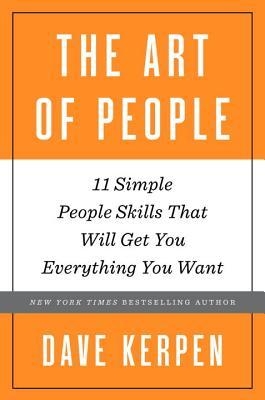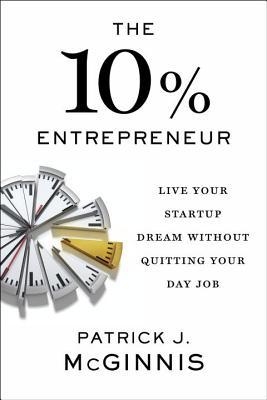

“The 10% Entrepreneur – Live Your Startup Dream without Quitting Your Day Job” by Patrick J. McGinnis (Portfolio/Penguin, $28).
There are five types of 10 percent entrepreneurs. The ten-percenters build businesses. They contribute capital, ideas, expertise, guidance or some combination thereof.
There are numerous startups on crowdfunding websites trying to raise capital by selling product to early adopters. These startups fly well below the radar of high-flying venture capital firms, and may well be interested in offering an equity (cash or sweat) stake. Approaching them isn’t difficult.
1. “The Angel” makes venture capital investments. They monetize their knowledge of a given market by investing (generally $5K to $25K) in someone else’s startup. Becoming an Angel requires research and negotiation skills, and the acceptance of the risk involved.
McGinnis started this way and became part of an Angel network of small investors who eventually pooled their money and thus diversified their portfolios and risk.
2. “The Advisor” offers expertise in return for sweat equity. A startup rarely has all the right people needed to execute its business plan. You fill the knowledge gaps by committing a certain amount of hours over a defined time period with an equity buyout down the road. Advisors recognize that the equity buyout only comes if the company becomes successful.
3. “The Founder” turns idea to reality through the expertise of others. He/she fronts the capital and gives up equity Day 1 to those who run day-to-day operations. All have the incentive to succeed. If the business grows, the founder faces a choice of leaving the day job or finding a partner to oversee it.
4. “The Aficionado” turns something they love into a part-time business. This isn’t necessarily about making money from a hobby. A good friend with six classic cars works Saturdays at a classic-car restoration shop.
5. “The 110% Entrepreneur” understands that the failures will outnumber the successes. He/she focuses on diversification to offset some of that risk.
Key takeaway: To succeed as one of McGinnis’ 10 percent entrepreneurs, you must be able to market yourself to small businesses and build a network of contacts that deal with startups. The book has numerous been-there-done-that stories.
“The Art of People: 11 Simple People Skills That Will Get You What You Want” by Dave Kerpen (Crown Business, $27).
Accomplishment involves connecting your dots to those of others and vice versa. Great people skills maximize dot-connecting because they create relationships grounded in mutual trust and respect. The 11 skills Kerpen identifies come with 53 tips on how to build them.
Here are my favorites:
When meeting new people, “be interested instead of interesting.” Most people are more interested in themselves than you. They talk about what’s important to them. Let them talk, talk and talk. Using “tell-me more” questions allows you to continually glean information from what they say and use it to provide “we’re on the same page” responses. Like-mindedness builds connection.
“Hire slow and fire fast – at work and in life.” There are two types of flat tires – a puncture (which can be fixed) and a sidewall blowout (which can’t be fixed). Remember the difference when dealing with relationship issues. The more time you spend trying to deal with what can’t be fixed, the less time you’ll spend building productive relationships.
“You never get what you don’t ask for.” The fear of hearing “no” keeps people from asking for a “yes.” Great salespeople are great closers; they always ask for “yes.”
“Make time your friend.” How? Spend most of your people time on “priority” relationships and situations. Kerpen’s high-demand schedule has “two office hours” each week set aside for meetings with new people.
To get the most out of Kerpen’s tips, complete the personality-type assessment in Appendix A. The results frame your mindset for adapting the tips to your people skills.
Jim Pawlak is a nationally syndicated reviewer of business books.







